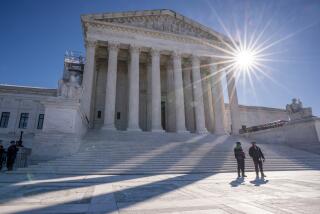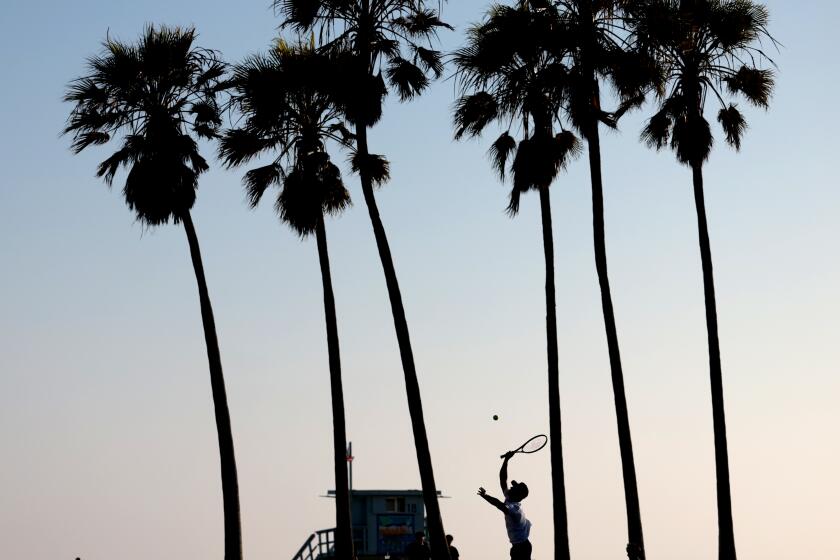Legal scholars examine the U.S. high court’s ‘Supreme Mistakes’
- Share via
Supreme Court justices are people too, and they make mistakes like any other mortals.
That was the conclusion of a high-powered gathering of legal scholars who on Friday examined the high court’s “Supreme Mistakes” — five decisions widely considered the worst in the court’s history.
The high court Hall of Shame has taken its toll on American society but also provided cautionary tales about trading principle for society’s fickle approval, the experts said.
“One of the worst aspects of American history is that at times of crisis we compromise our most basic constitutional rights, and only in hindsight do we recognize that it didn’t make us safer,” Erwin Chemerinsky, dean of UC Irvine’s law school, said of Korematsu vs. United States, the 1944 high court ruling upholding the evacuation order against Japanese Americans after the bombing of Pearl Harbor.
He argued that the court hasn’t always embraced the lessons of its mistakes, as evidenced by the U.S. military’s indefinite detention at Guantanamo Bay, Cuba, of men suspected of plotting terrorism but accorded neither trials nor legitimate opportunity to challenge their incarceration.
Korematsu, the ruling that justified the internment of 110,000 Japanese Americans without individual cause or suspicion, was enshrined by the law scholars in a pantheon of other notorious decisions that validated the forced sterilization of the mentally deficient, the denial of citizenship to the descendants of slaves, the imposition of segregation and the throwing out of a century of federal law protections in some states.
To put the most maligned Supreme Court decisions in historical context, constitutional law scholars from across the political spectrum debated the “Supreme Mistakes” at Pepperdine University’s law school, presenting the rulings as learning opportunities as well as thwarted justice.
The high court’s decision in Dred Scott vs. Sandford in 1857 held that the descendants of slaves weren’t entitled to U.S. citizenship or the protections of the Constitution, including Scott’s claimed right to sue for his freedom in the Louisiana Territory, where slavery was forbidden.
“It was a deeply racist opinion that goes far out of its way to warmly embrace the institution of slavery,” said Daniel Farber, a UC Berkeley law professor who said the decision arguably led to the Civil War and hundreds of thousands of deaths.
Akhil Amar, a Yale University law professor, traced a historical tendency of the Supreme Court to accommodate racism among three of the five cases dissected by the scholars. Plessy vs. Ferguson, the 1896 ruling that upheld a Louisiana law requiring the racial segregation of railway passengers, cited Dred Scott in its legal reasoning, and Korematsu in turn pointed to Plessy as precedent.
In Buck vs. Bell in 1927, fear and prejudice drove the high court to uphold a Virginia law allowing the sexual sterilization of institutionalized people. The case was brought by a feeble-minded woman who had given birth out of wedlock to a mentally deficient child, later determined to have been the result of rape by a caretaker’s family member. In writing for the 8-1 majority, Justice Oliver Wendell Holmes, noting that Carrie Buck’s mother was also mentally challenged, infamously proclaimed that “three generations of imbeciles are enough.”
The fifth case examined by the professors, 1938’s Erie vs. Tompkins, earned its infamy more for procedural injury than individual harm, as it tossed out nearly a century of federal civil case law applied in states lacking statutory guidance. The ruling had the effect of relieving the Erie Railroad of liability for injuries suffered by a Pennsylvania man hit by a railcar door negligently left open. The decision paved the way for what is now known as “forum shopping,” in which litigants choose a court expected to rule in their favor.
“These cases show that the Supreme Court does make mistakes, that the justices aren’t infallible,” said Tom Best, acting dean of Pepperdine’s law school. “They show that the justices will be subject to the same interests and pressures of society at the time they make decisions as any other American.”
More to Read
Sign up for Essential California
The most important California stories and recommendations in your inbox every morning.
You may occasionally receive promotional content from the Los Angeles Times.











